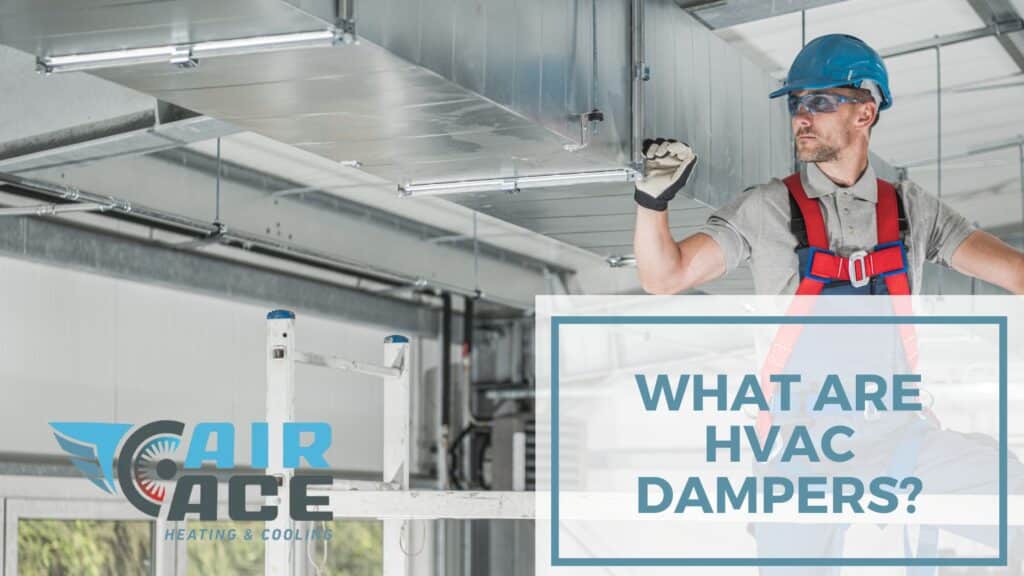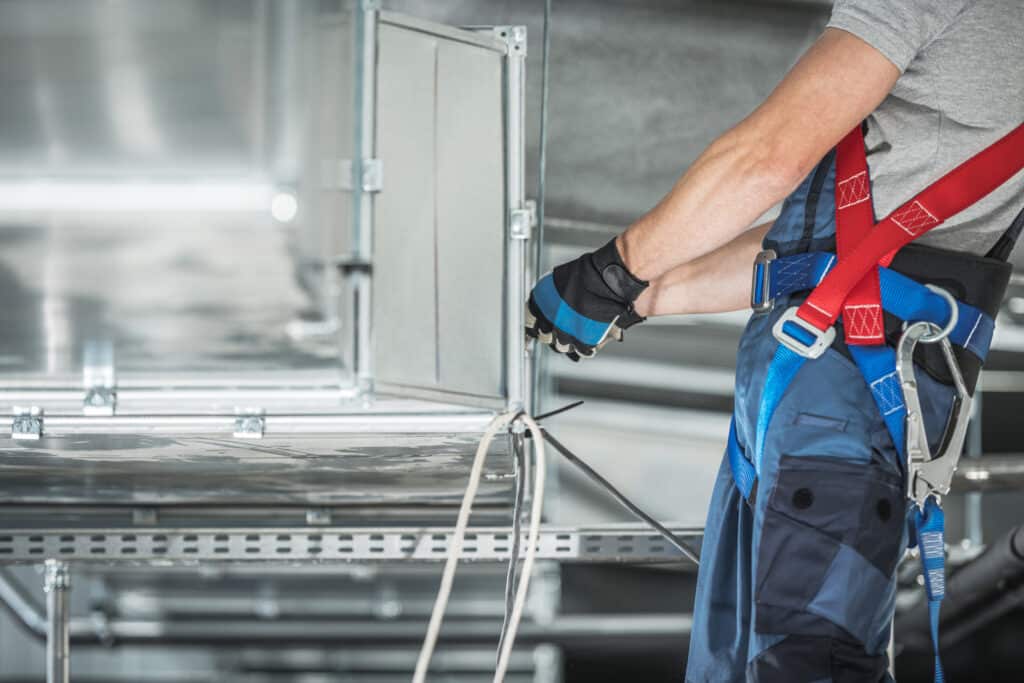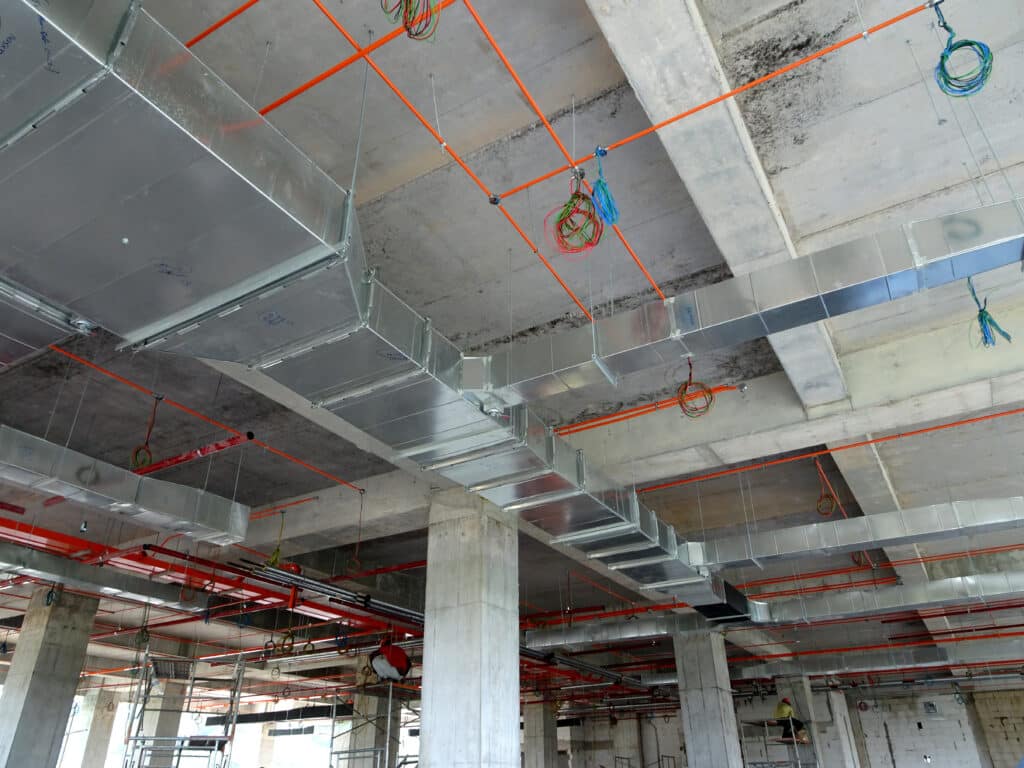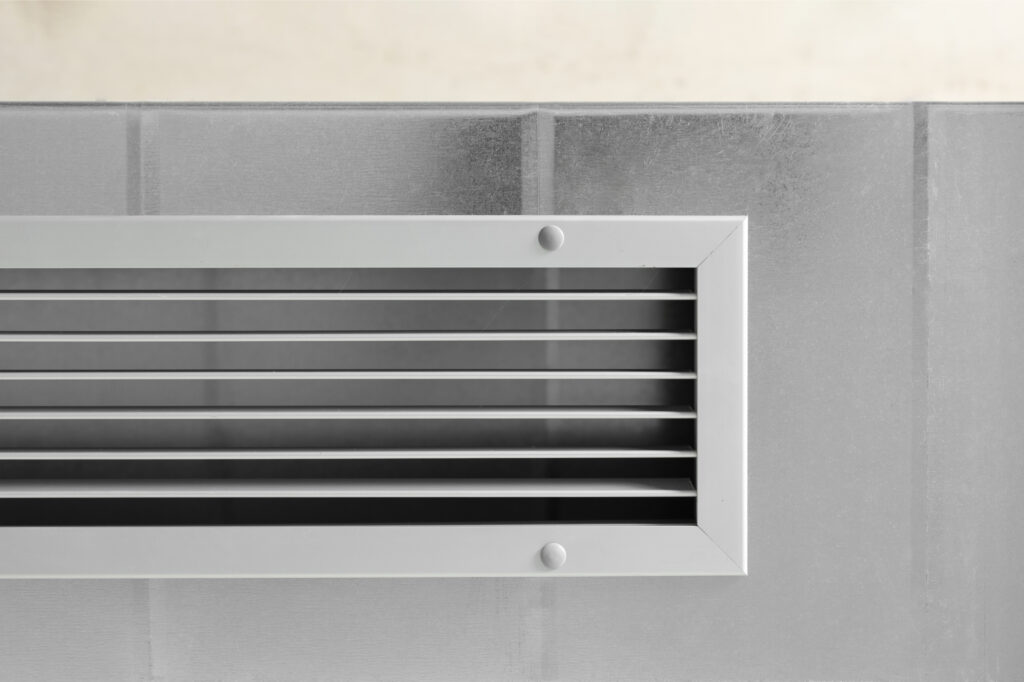What Are HVAC Dampers?

The Importance of HVAC Dampers
When it comes to maintaining a comfortable and efficient indoor environment, HVAC systems play a crucial role. However, many overlook the importance of HVAC dampers in achieving optimal performance.
HVAC dampers are simple yet essential devices that regulate airflow and temperature throughout a building. They can help to reduce energy costs, improve indoor air quality, and increase the lifespan of HVAC equipment.
Understanding the different types of HVAC dampers and how to properly adjust the HVAC dampers can have a significant impact on the overall performance of your HVAC system. Let’s dive into the world of HVAC dampers and learn more about these often overlooked but critical components.
How Do HVAC Dampers Work?
HVAC dampers are essentially metal plates that are installed inside the ductwork of your home. These plates can be adjusted to allow more or less air to flow through the ducts. The dampers can be adjusted manually or automatically, depending on the type of damper and the zoning system.
Different Types of HVAC Dampers
There are several different types of HVAC dampers, each with its own unique features and benefits. One of the most common types of HVAC damper is the blade damper. This type of damper has two blades that can be adjusted to regulate the airflow through the ducts.
Another type of damper is the butterfly flat dish damper. This type of damper has a single blade that rotates around a central hinge to regulate the airflow. Guillotine dampers are another type of damper that uses a sliding blade to control the airflow.
Parallel blade dampers are another popular type of damper. These dampers have two or more blades that move in opposite directions to regulate the airflow. Opposed blade dampers are similar to parallel blade dampers, but the blades move in the same direction.
Louver dampers are a type of dampers that uses angled slats to regulate the airflow. Inlet vane dampers are similar to louver dampers, but they use a series of small metal plates to control the airflow.
Butterfly Flat Dish Dampers
Butterfly flat dish dampers are a type of HVAC damper that is commonly used in air conditioning systems. These dampers consist of a circular blade that rotates around a central axis to control the flow of air. The blade is designed to seal against the damper frame to prevent air from leaking through when the damper is closed.
One of the benefits of butterfly flat dish dampers is their ability to provide a tight seal when fully closed. This seal helps to prevent unwanted air leakage and maintains the desired level of airflow in the HVAC system.
Butterfly flat dish dampers can be manually or electronically controlled. Manual control is typically achieved through the use of a hand crank or a lever, while electronic control is through the use of a motorized actuator. electronic control allows for more precise and efficient control of airflow in the HVAC system, which can lead to energy savings and improved system performance.
Blade Dampers
Blade dampers, also known as parallel blade dampers, are the most common type of damper used in HVAC systems. They are designed with multiple blades that move in a parallel motion to control the airflow. These blades can be adjusted manually or automatically using an actuator.
Blade dampers come in a range of sizes to fit various duct sizes. The blades themselves can also come in different shapes, including rectangular or round. Rectangular blades are typically used in rectangular ductwork, while round blades are used in round ductwork.
Guillotine Dampers
Guillotine dampers, also known as slide dampers, are another type of damper used in HVAC systems. They are designed with a single blade that slides up and down to control the airflow. Guillotine dampers are typically used in larger ductwork, where blade dampers may not be practical.
One of the benefits of guillotine dampers is that they can be completely closed, providing positive isolation. It is useful in situations where airflow needs to be completely shut off, such as during maintenance or repairs.
Louver Dampers
Louver dampers, also known as operable louvers, are designed with horizontal blades that rotate to control the airflow. They are often used in outdoor air intake systems to prevent the entry of rain, snow, and debris.
Louver dampers can also be used in HVAC systems to control the airflow to specific areas of the home. However, they are less common than a blade or guillotine dampers in this application.
Inlet Vane Dampers
Inlet vane dampers, also known as variable inlet vanes, are designed with a set of curved blades that are positioned in front of the fan. The blades can be adjusted to control the airflow and pressure of the system.
Inlet vane dampers are commonly used in large commercial HVAC systems, but can also be used in residential applications. They are particularly effective at reducing energy consumption and improving system performance by allowing the fan to operate at peak efficiency.

When Should I Open and Close My HVAC Dampers?
Here are some guidelines for when to open and close your HVAC dampers:
Heating season
During the heating season, you should close the dampers in rooms that you don’t use often. This will redirect the heated air to the rooms you do use, making those spaces more comfortable and helping you save energy.
Cooling season
During the cooling season, you should do the opposite and close the dampers in the rooms that you use less often. This will help redirect the cool air to the rooms that need it the most, saving energy and improving your overall comfort.
Seasonal changes
As the seasons change, you should adjust your damper settings accordingly. For example, in the spring and fall, when temperatures are mild, you may be able to open more dampers than you would during the summer or winter.
Adjusting Dampers
To adjust HVAC dampers, you will need to locate them and determine whether they are manual or automatic. Manual dampers can be adjusted by turning a handle or lever, while automatic dampers can be adjusted using a control panel or thermostat.
It’s important to note that adjusting dampers can impact the airflow and overall performance of your HVAC system. If you are unsure about how to adjust your dampers, it’s best to consult a professional HVAC technician.

A zoning system is a heating and cooling system that allows different parts of your home to be cooled or heated independently of each other. It means that you can have different temperatures in different rooms, depending on the preferences of the occupants. A zoning system is typically made up of a central heating and cooling unit, ductwork, thermostats, and HVAC dampers.
Components of an HVAC Zoning System
In a typical HVAC zoning system, several components work together to regulate the temperature and airflow throughout the home. These include the central heating and cooling unit, the ductwork, thermostats, and HVAC dampers.
The central heating and cooling unit is the heart of the system, and it is responsible for heating and cooling the air that is circulated throughout the home. The ductwork distributes the conditioned air to the different zones inside the house.
The central heating and cooling unit is the heart of the system. It is responsible for heating and cooling the air circulating throughout the home. The ductwork distributes the conditioned air to the different zones inside the house.
HVAC Dampers: A Crucial Component in HVAC Zoning System
As homeowners, we want to ensure that our heating and cooling systems run as efficiently as possible. Not only to save money but also to promote comfort and well-being within our homes.
One of the most critical components of any HVAC (heating, ventilation, and air conditioning) system is the damper. Dampers play a crucial role in regulating the airflow throughout a building, and their importance is particularly pronounced in HVAC zoning systems.

Where Are HVAC Dampers Located in a Home?
HVAC dampers are located in various places throughout a home’s HVAC system. Some of the most common locations include:
At the main trunk line: This is where the HVAC system’s main supply duct connects to the rest of the ductwork in the home. Dampers can be located here to control the airflow to different areas of the home.
In branch ducts: Branch ducts are smaller ducts that connect to the main supply duct and deliver air to specific rooms or areas of the home. Dampers can be located in these ducts to control the airflow to each room or area.
Near the air handler: The air handler is the central unit that circulates air throughout the HVAC system. Dampers can be located near the air handler to control the amount of air that is circulated through the system.
Summary:
In conclusion, HVAC dampers play a critical role in regulating airflow in an HVAC system. They come in many different types and are used in various applications to control airflow, increase energy efficiency, and provide comfort to occupants.
Understanding the different types of dampers and their functions can help homeowners and businesses ensure that their HVAC systems are functioning efficiently and providing optimal comfort. If you have questions about your HVAC system or need assistance with adjusting your HVAC dampers, contact a qualified HVAC professional.


